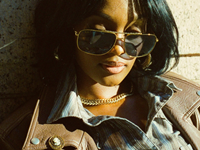On August 31, 2012, the Sun discharged a huge amount of energy in a gigantic explosion. A long filament of solar material was ejected from the Sun's atmosphere, the corona, into space. This event is known as a coronal mass ejection (CME) and was imaged at various wavelengths of ultraviolet light by the Solar Dynamics Observatory. This photo combines the different wavelengths to clearly show the details of the solar event.
This coronal mass ejection (CME) interacted with Earth's magnetic field, traveling at 900 miles per second (1450 km/s). When particles released during a CME encounter gases in the Earth's magnetosphere, they create mesmerizing light shows in the sky: auroras.
Auroras occur more frequently and more strongly during solar maximum, the highest level of activity in the Sun's 11-year cycle. Since we have observed auroras more than once this year, you may have noticed that we are currently in this period of intense activity. If you take a look back through our feed, you can find several photos of these impressive light shows.
We'll be sure to let you know when there's another great opportunity to see the aurora. In the meantime, here are some viewing tips to keep in mind for next time.
1. Check the weather forecast. You will need a clear sky to get the best view of this phenomenon.
2. Go somewhere safe and dark. Strong auroras can be seen even in big cities, but the best views will be in areas with little or no light pollution.
3. Be patient! While the displays can last all night, sometimes they can be much shorter-lived and their brightness can change throughout the night.
Image description:
The sun appears as a bright, fiery red and orange ball. A long thread of material protrudes in the lower left. There is a yellow-orange haze around the Sun; in some places it spreads out like a feather.
Credit: NASA/GSFC/SDO


 Nielawore
Nielawore









Yorumlar
Nice
Yorum yazmak için lütfen giriş yapınız